
Q2 May See the Hottest Market
Since the Peak of the Pandemic Boom
Ever since the beginning of the year, and now moving into the spring selling season, striking
shifts in supply and demand have occurred and continued to accelerate, resulting in a
dramatic leap in the heat and competitiveness of market conditions. Based on current
indicators, and what is being experienced on the ground as new listings arrive on the
market, deals are negotiated, and homes go into contract, it appears almost certain that
significant home price increases will continue in Q2 2024.
Macroeconomic Conditions
In the 8 weeks through early April, the weekly average, 30-year conforming-loan interest
rate has oscillated between 6.74% and 6.94%: Up from January, but still well down from last
fall. In the last month, the S&P 500 & Nasdaq stock market indices continued to hit new all-
time highs, with substantial effects on household wealth. After the big jump in December-
January, consumer confidence is at its highest point in almost 3 years. Monthly inflation
rates have remained stable since October, ranging from 3.1% to 3.3%: Higher than the Fed’s
2% goal, but reductions in its benchmark rate later this year are still commonly expected.
Both the latest national and San Francisco unemployment readings, at 3.8%, remain close to
historic lows.
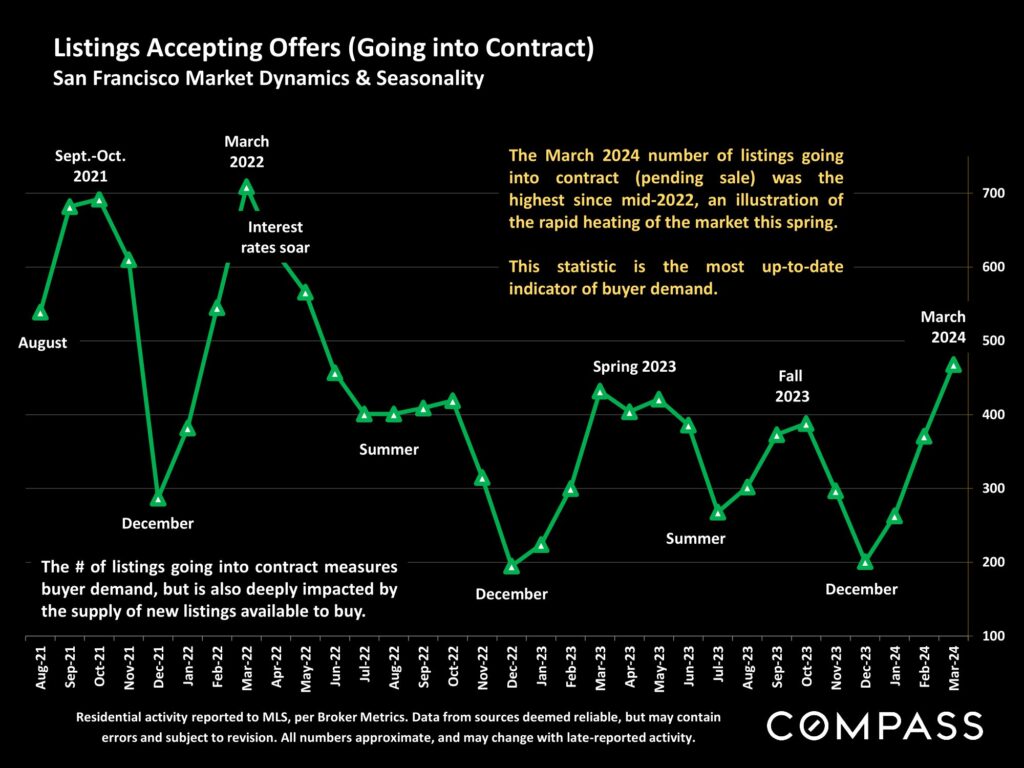
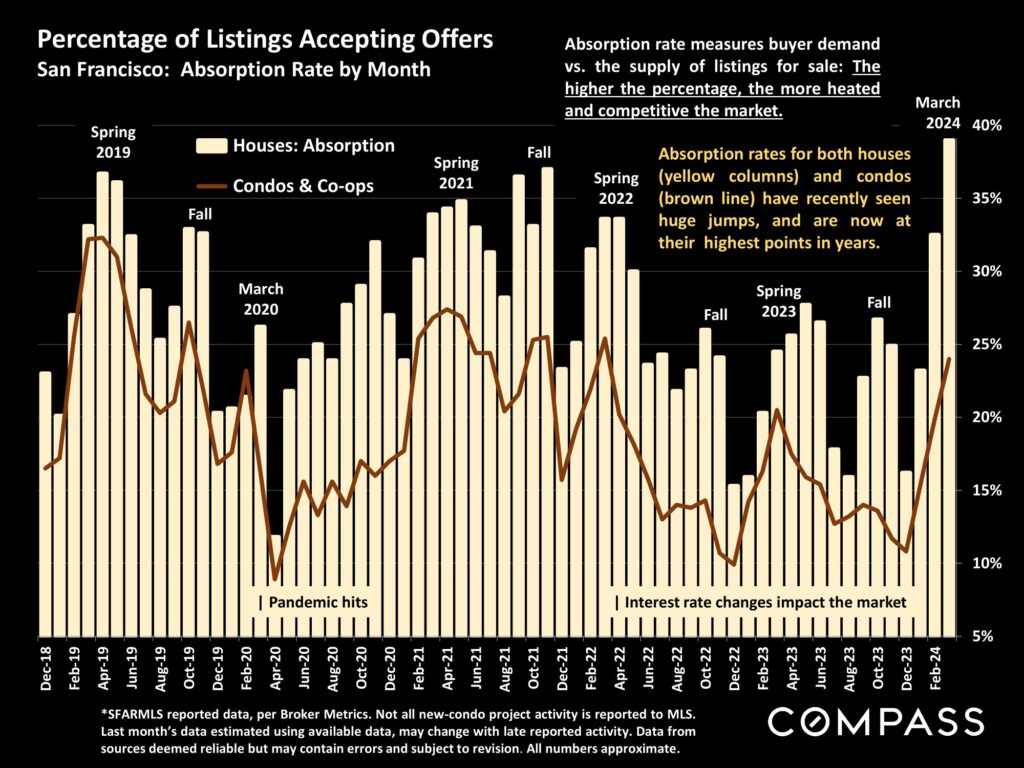
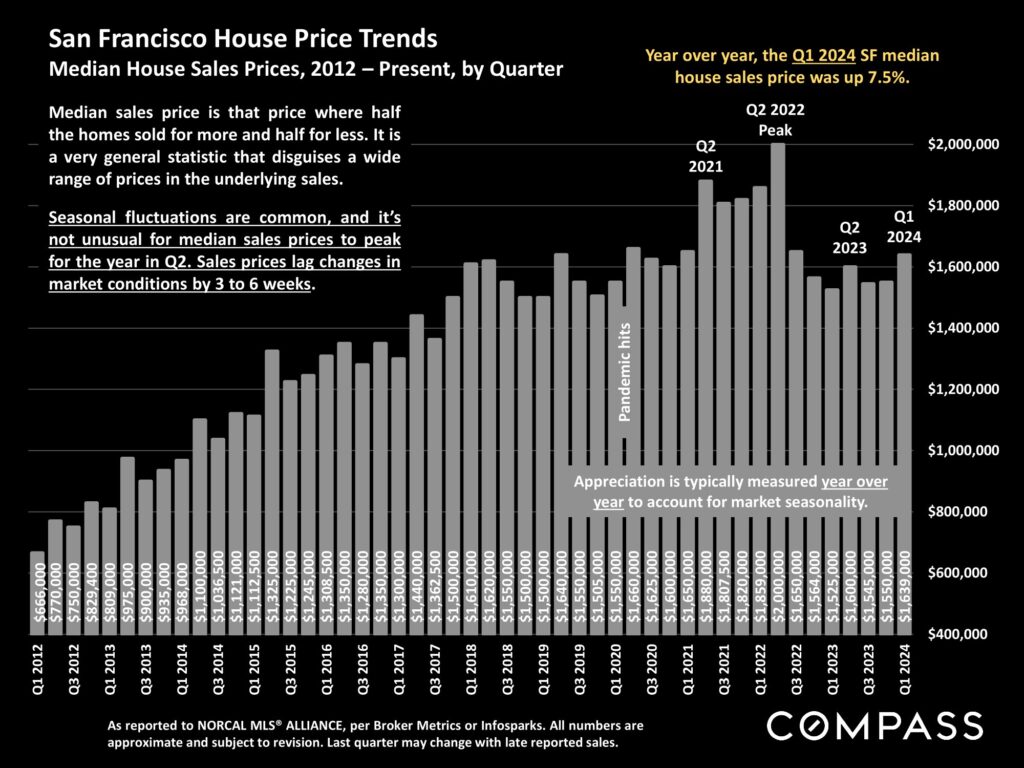
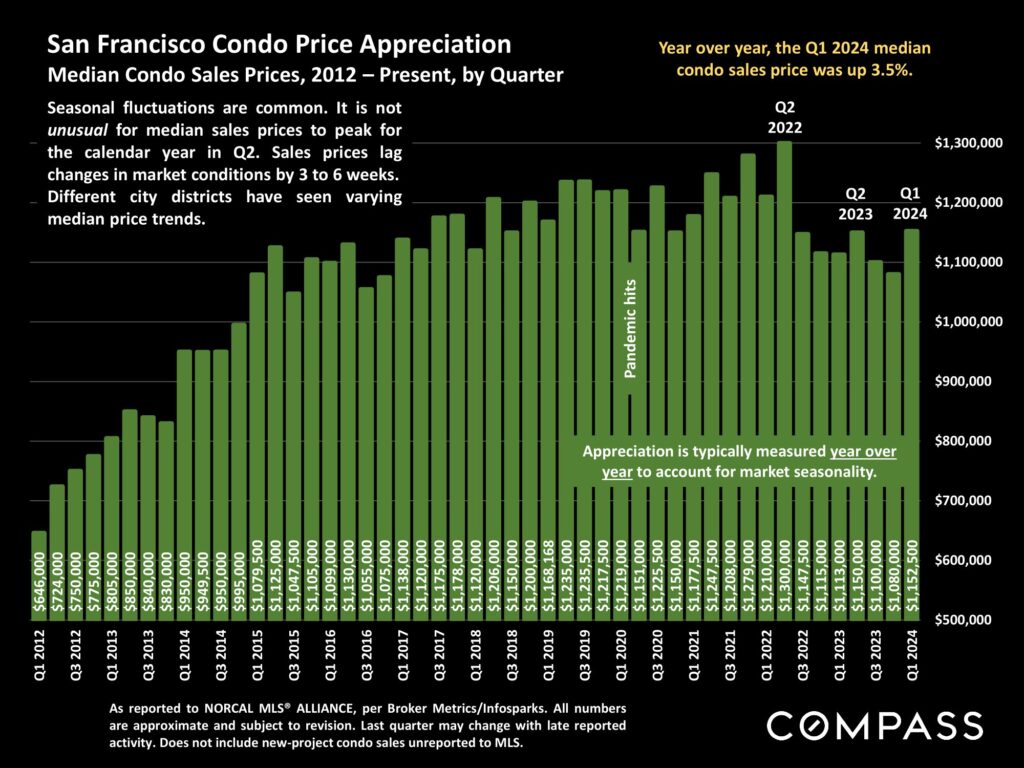
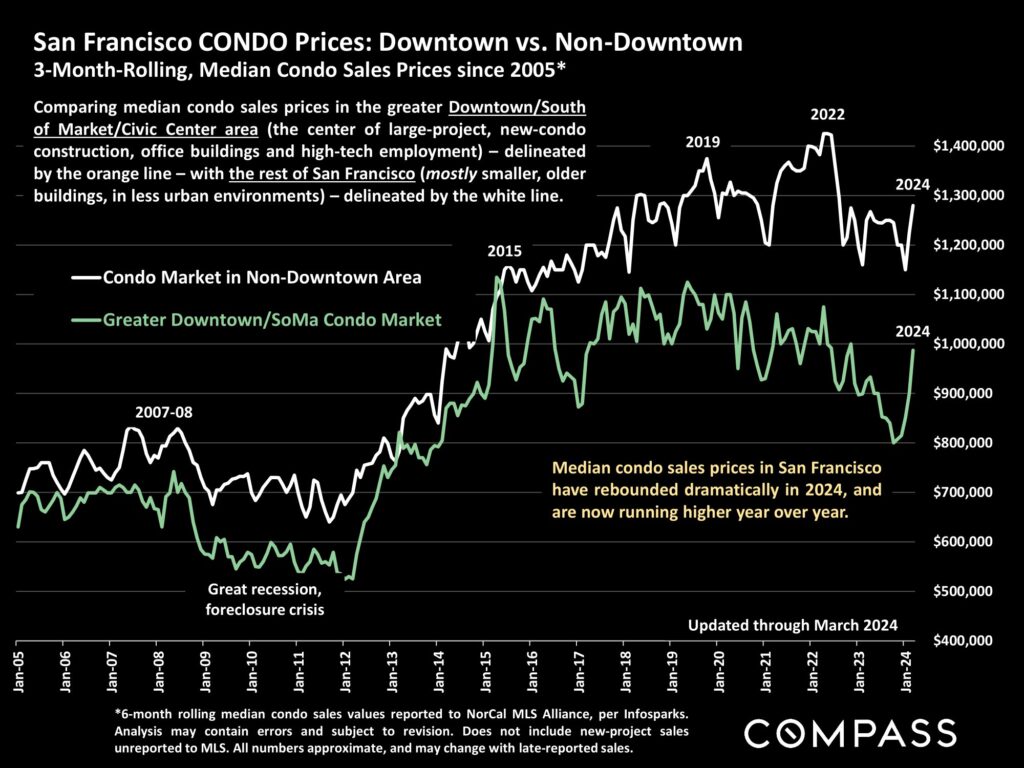
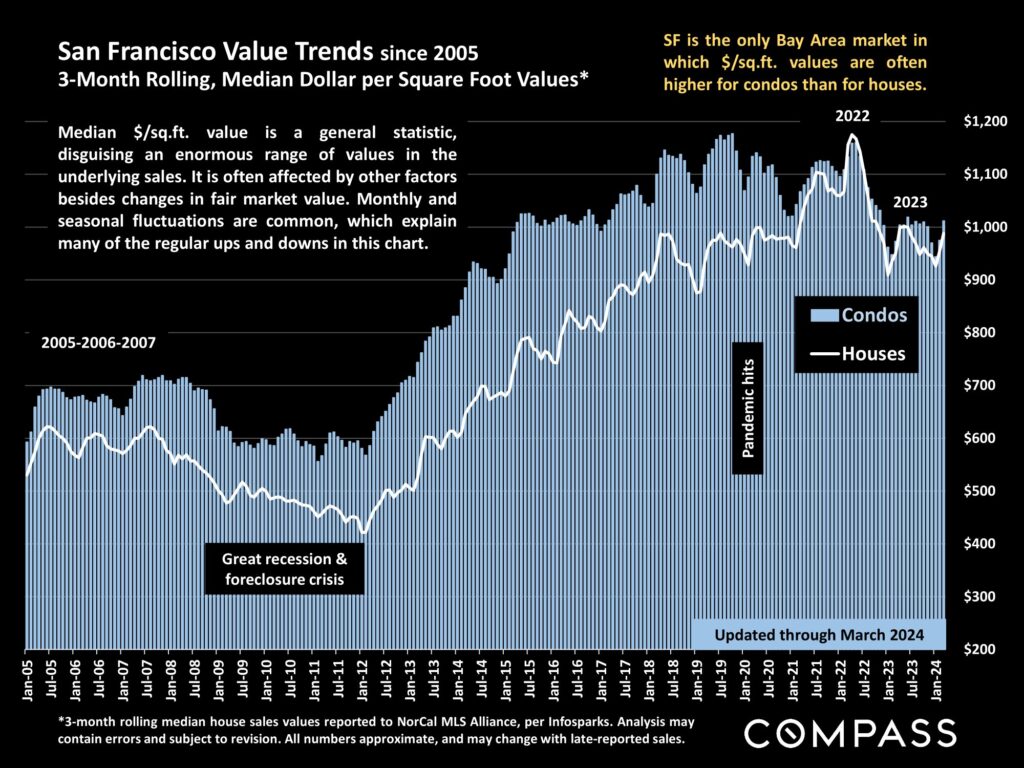
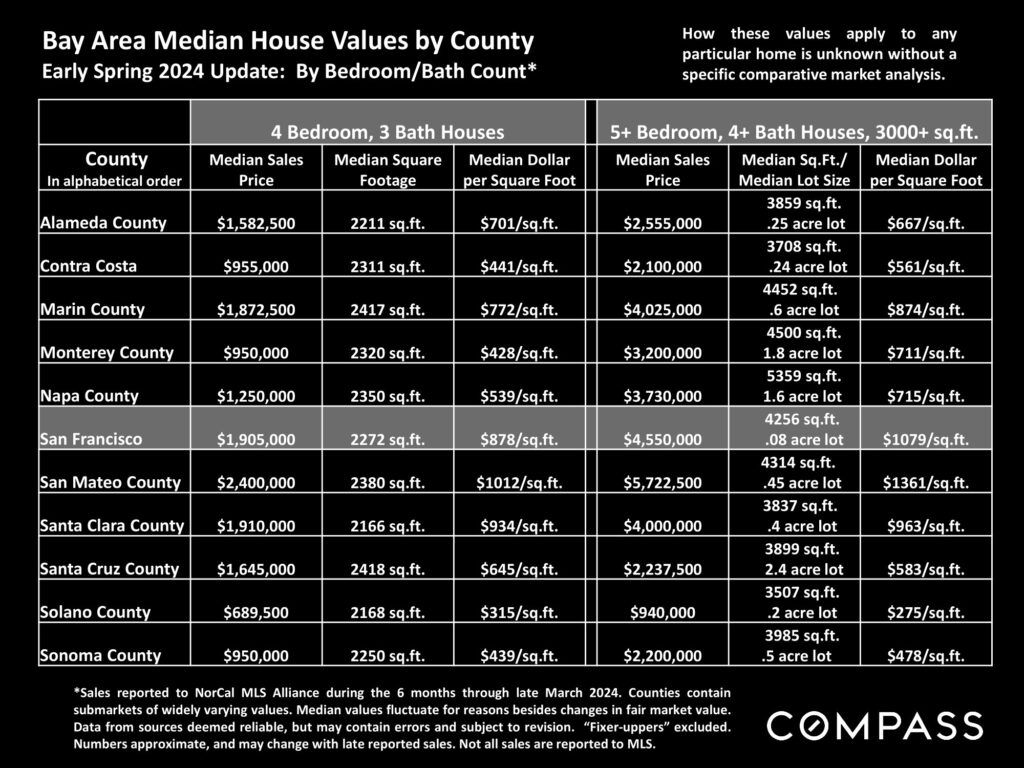
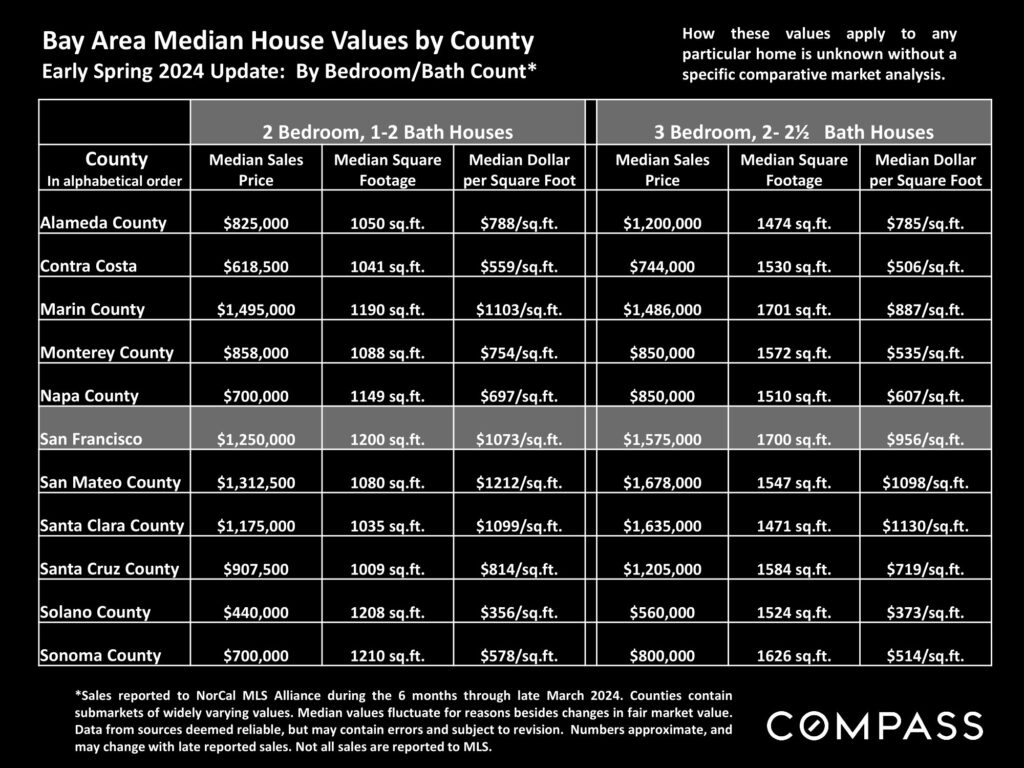
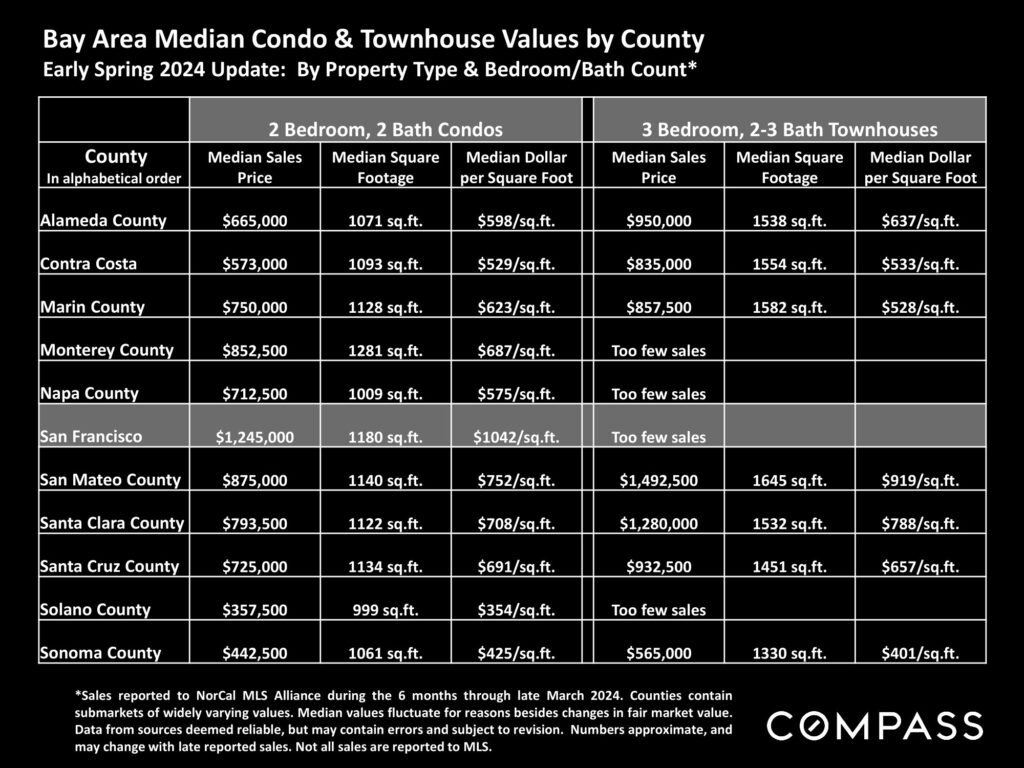
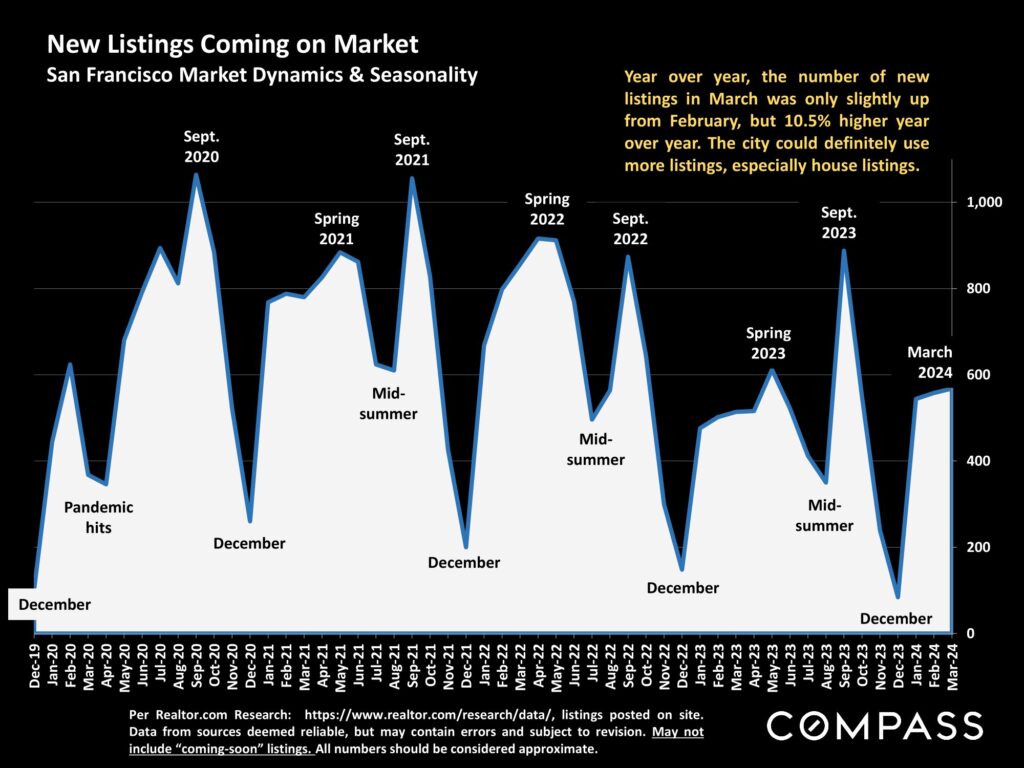
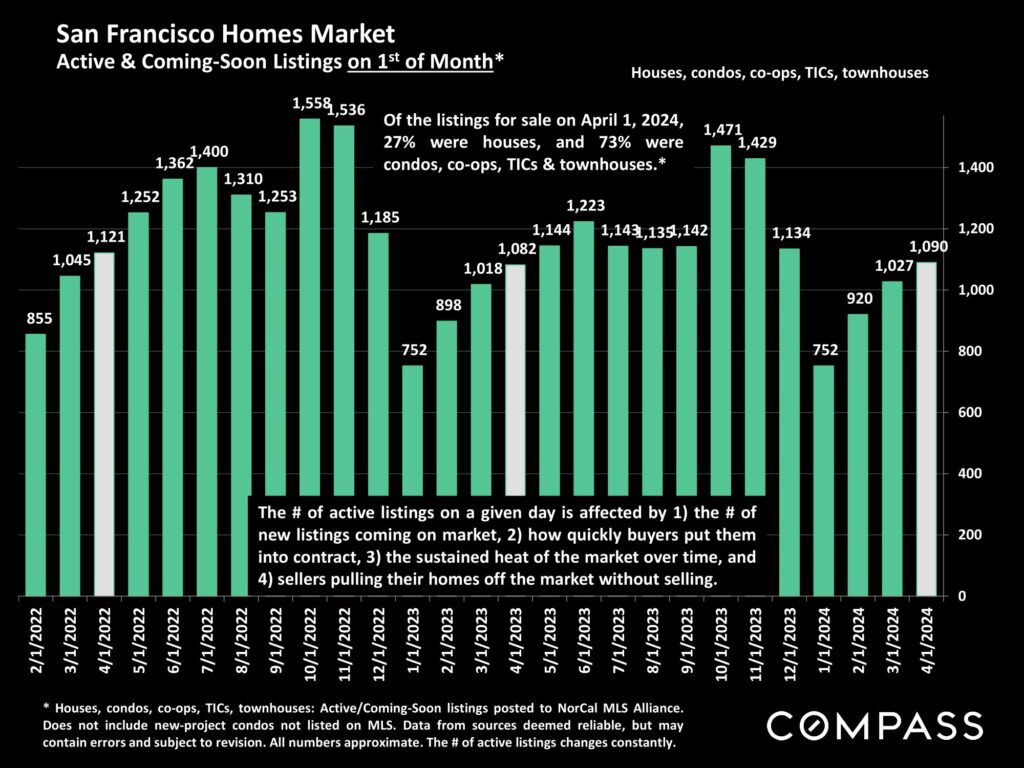
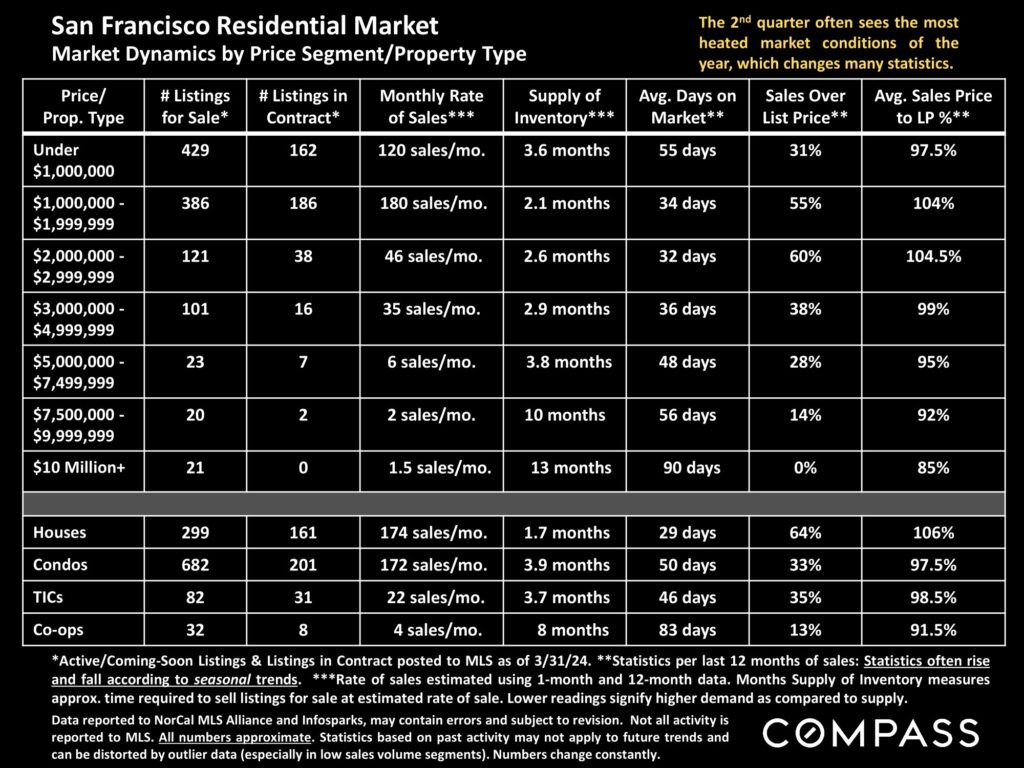
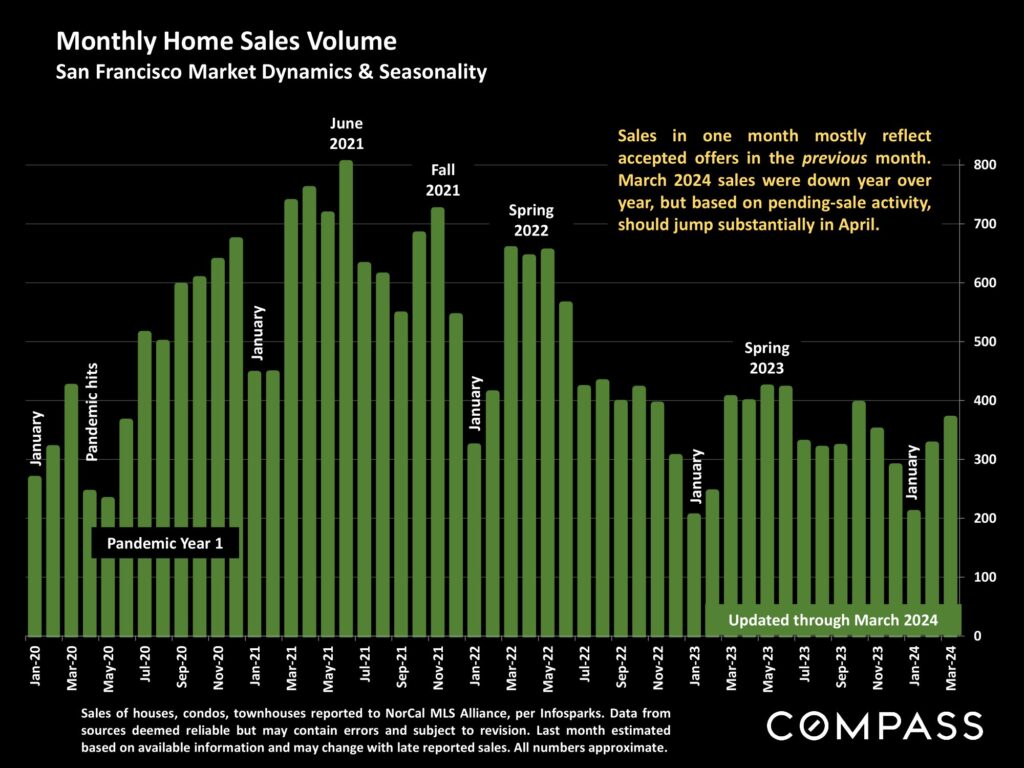
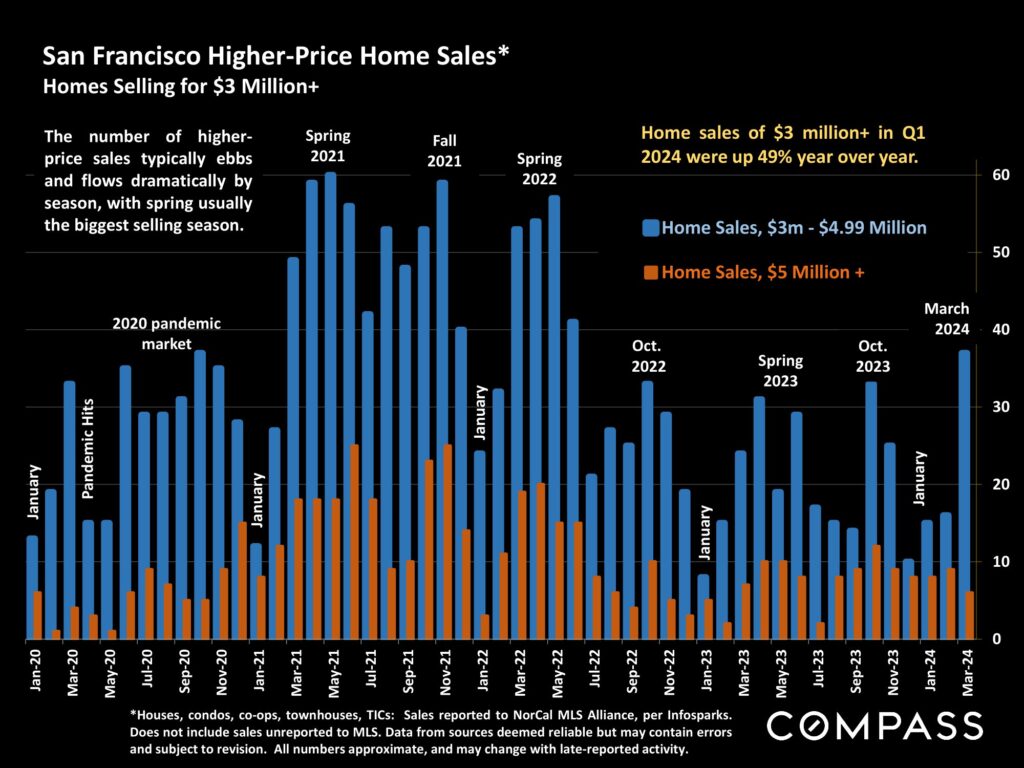
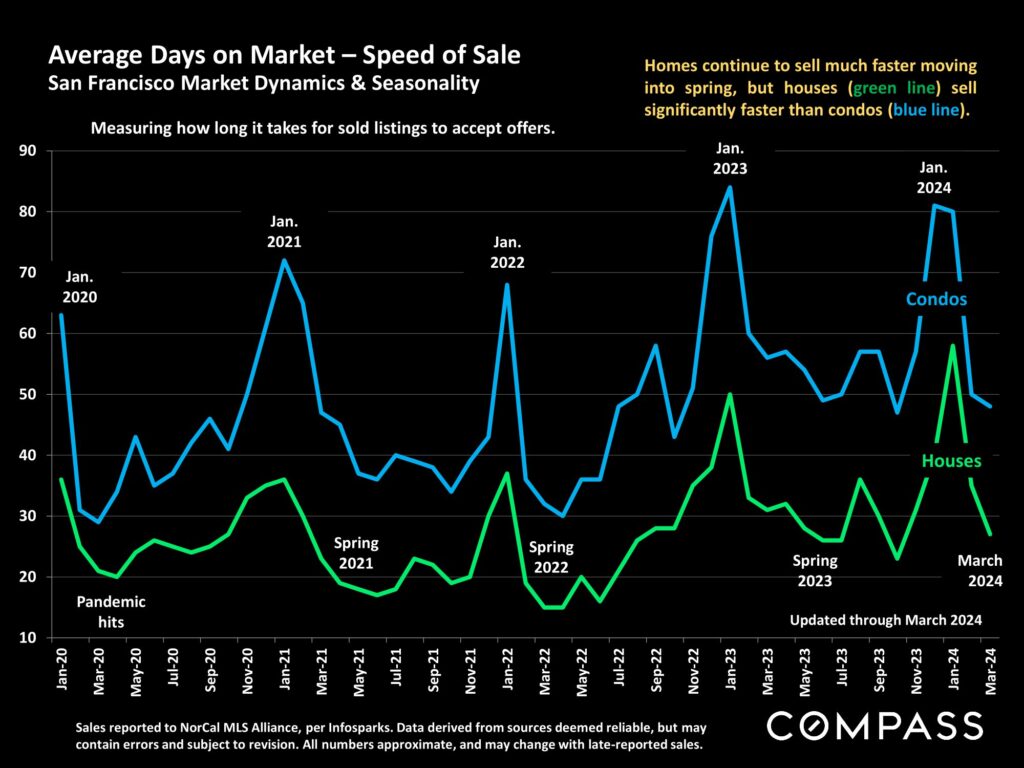
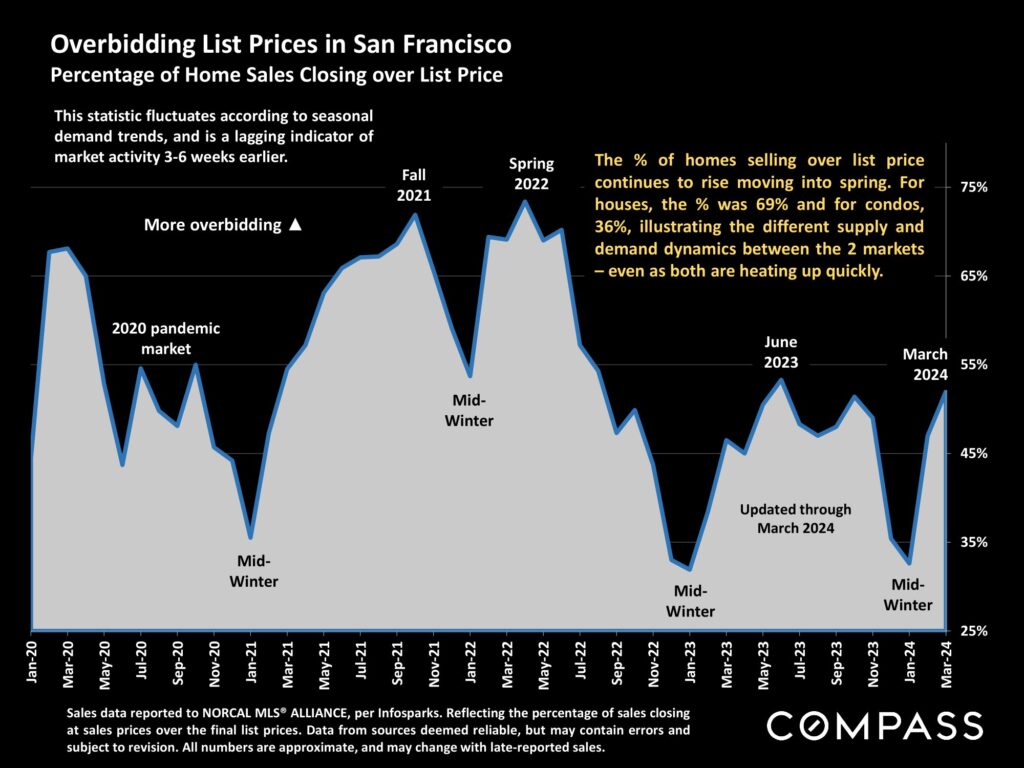
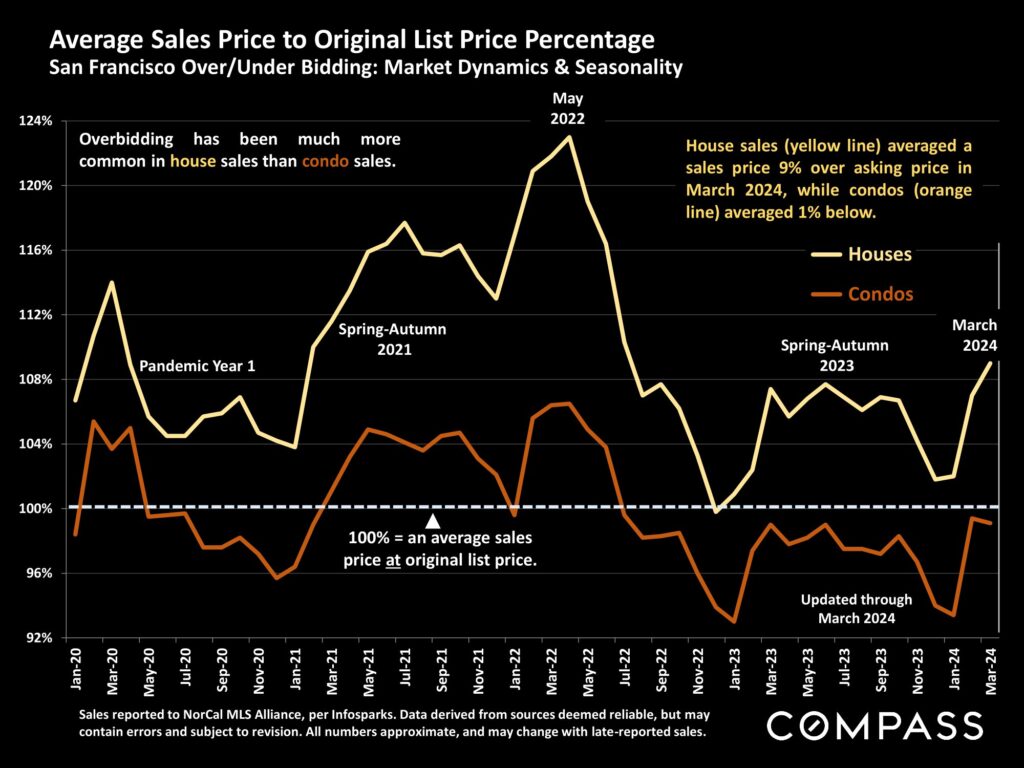
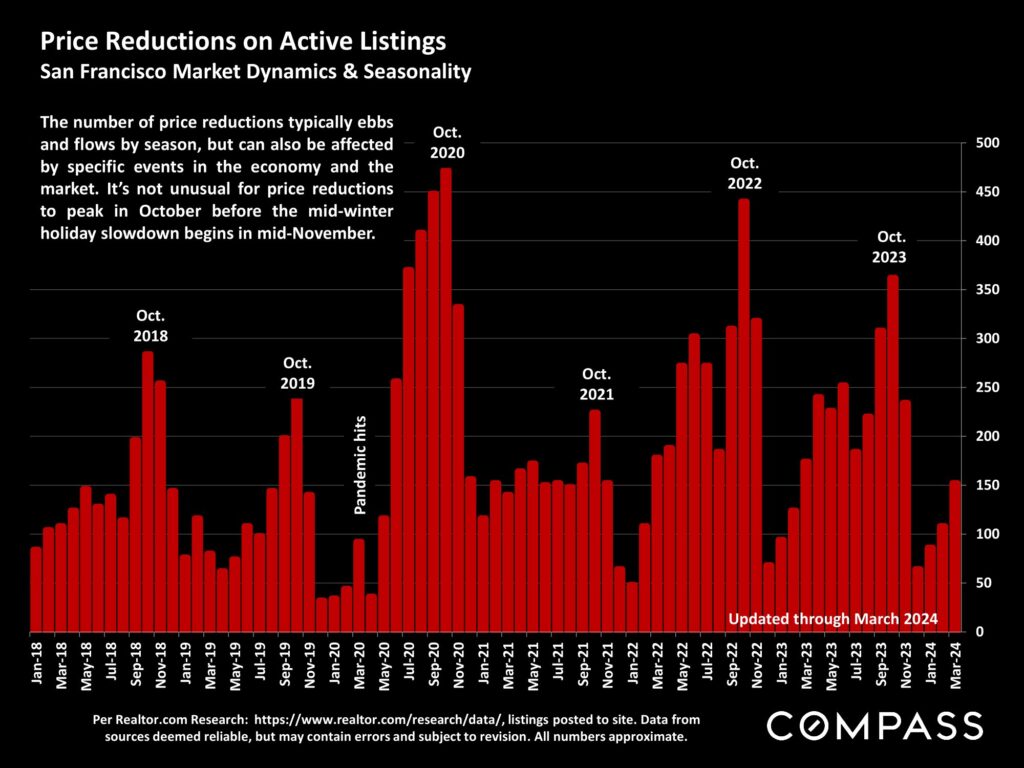
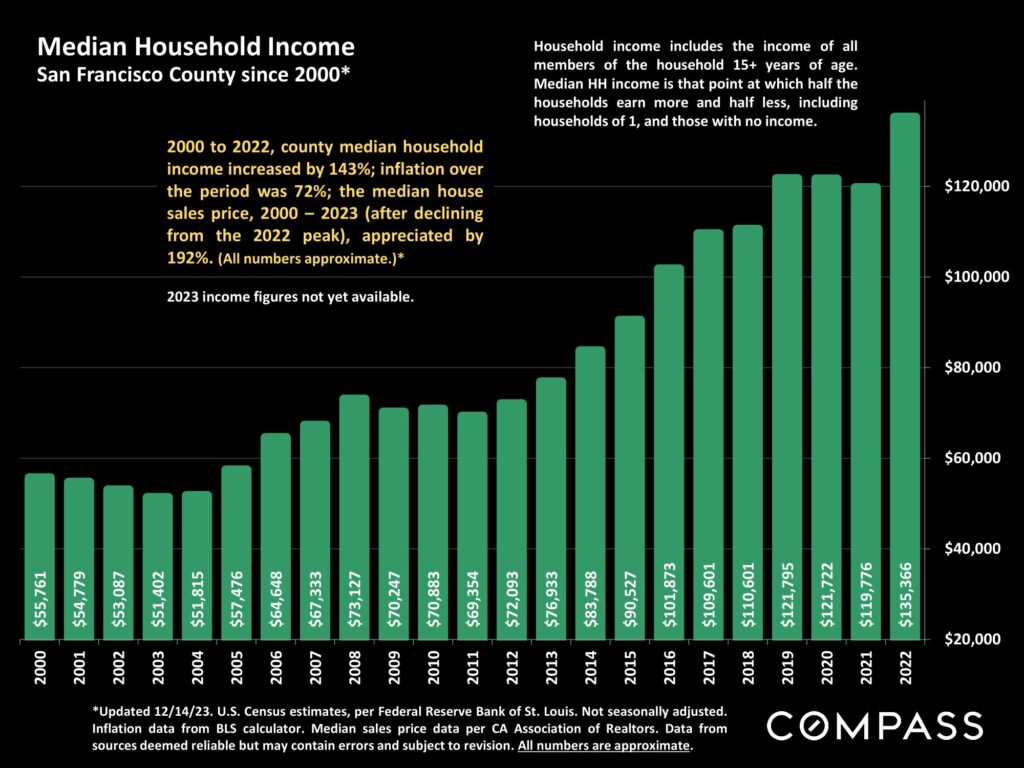
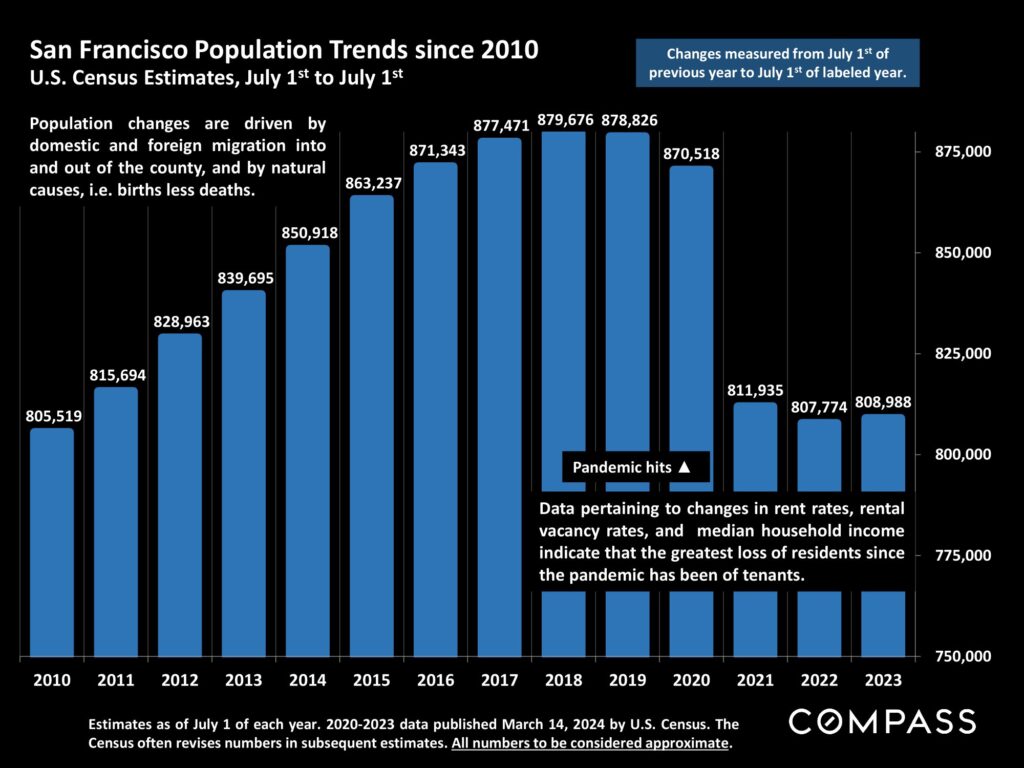
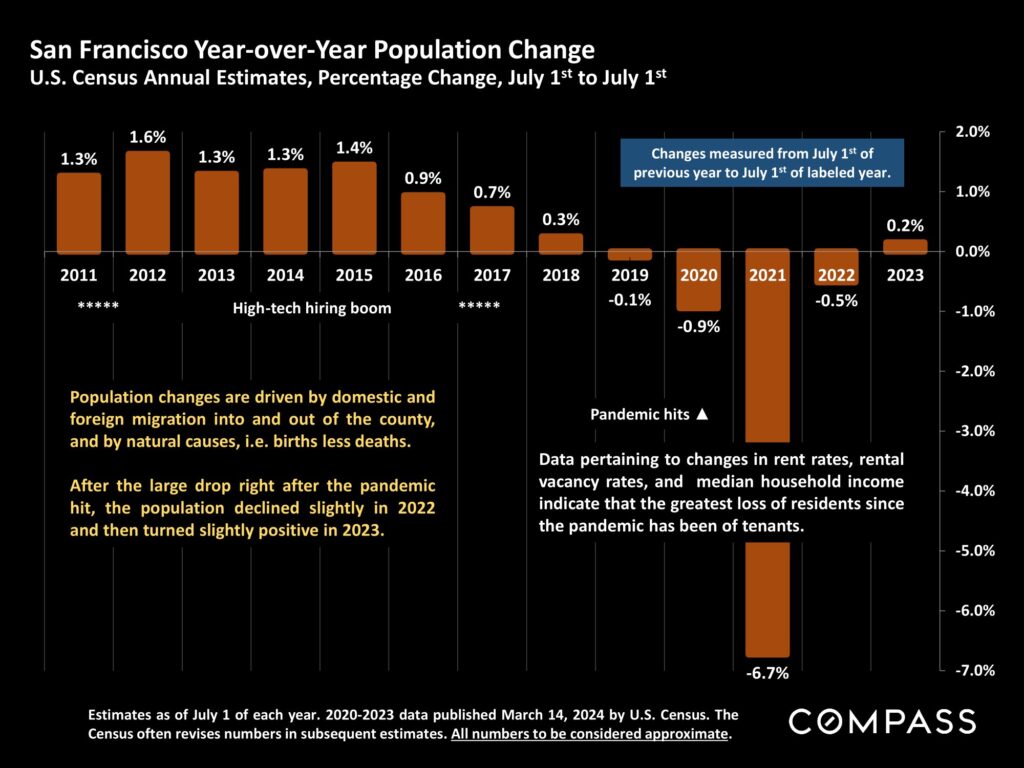
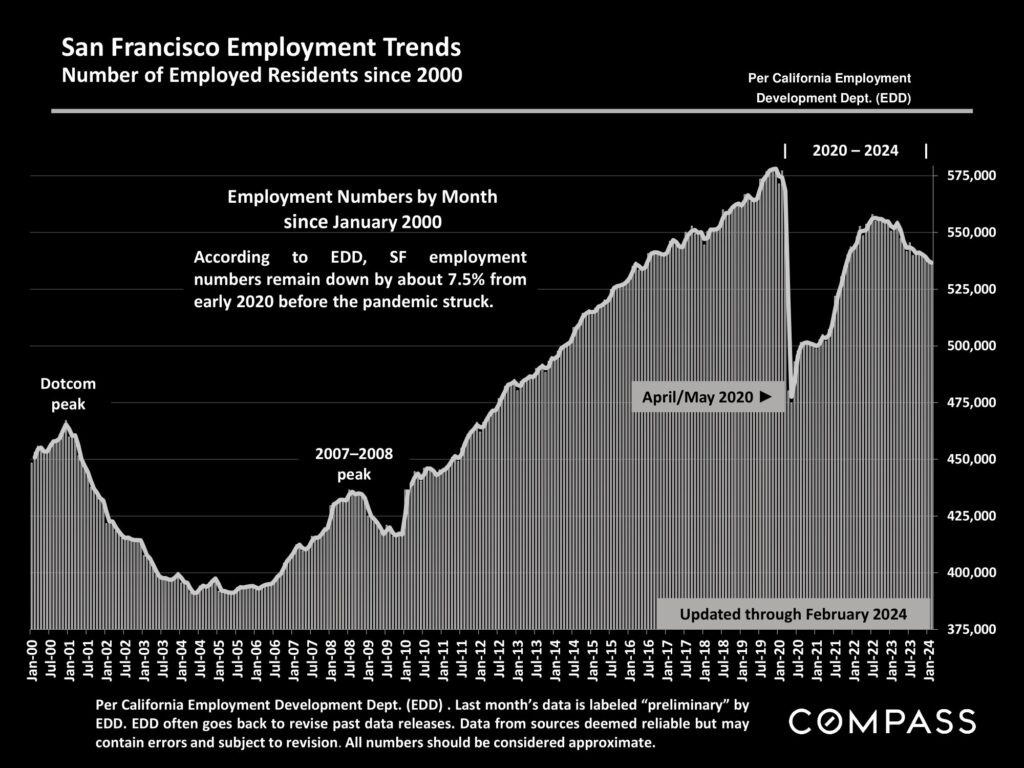
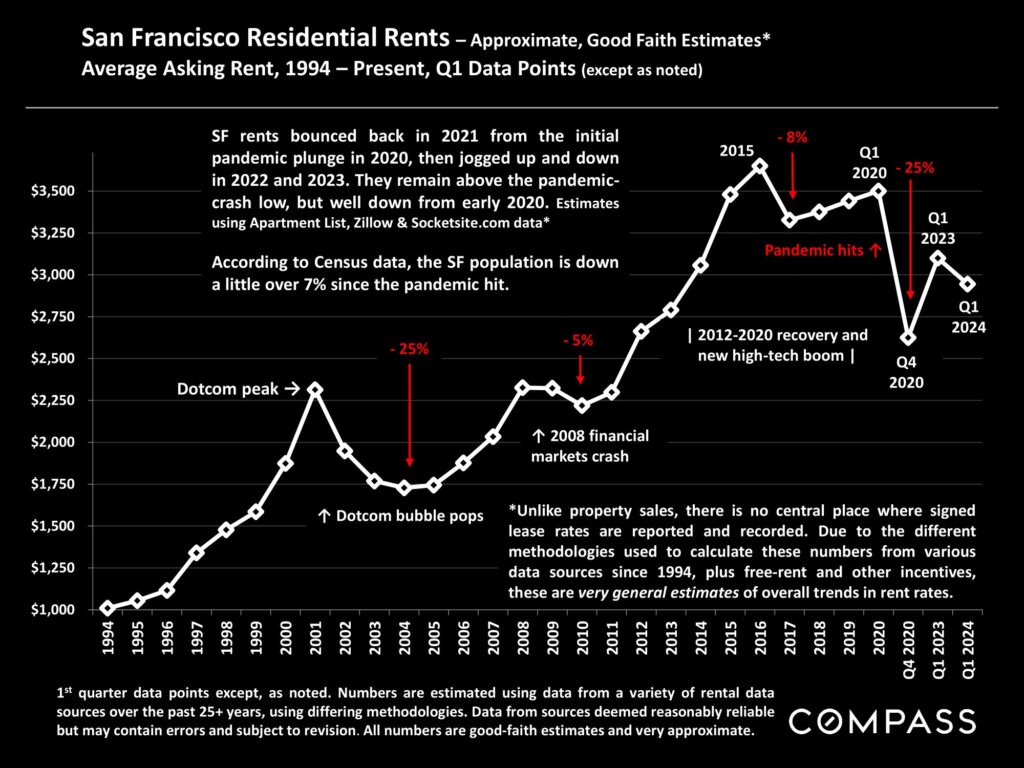
Statistics are generalities, essentially summaries of widely disparate data generated by dozens, hundreds or thousands of
unique, individual sales occurring within different time periods. They are best seen not as precise measurements, but as broad,
comparative indicators, with reasonable margins of error. Anomalous fluctuations in statistics are not uncommon, especially in
smaller, expensive market segments. Last period data should be considered estimates that may change with late-reported
data. Different analytics programs sometimes define statistics – such as “active listings,” “days on market,” and “months supply
of inventory” – differently: what is most meaningful are not specific calculations but the trends they illustrate. Most listing and
sales data derives from the local or regional multi-listing service (MLS) of the area specified in the analysis, but not all listings
or sales are reported to MLS and these won’t be reflected in the data. “Homes” signifies real-property, single-household
housing units: houses, condos, co-ops, townhouses, duets and TICs (but not mobile homes), as applicable to each market.
City/town names refer specifically to the named cities and towns, unless otherwise delineated. Multi-county metro areas will
be specified as such. Data from sources deemed reliable, but may contain errors and subject to revision. All numbers to be
considered approximate.
Many aspects of value cannot be adequately reflected in median and average statistics: curb appeal, age, condition, amenities,
views, lot size, quality of outdoor space, “bonus” rooms, additional parking, quality of location within the neighborhood, and
so on. How any of these statistics apply to any particular home is unknown without a specific comparative market analysis.
Median Sales Price is that price at which half the properties sold for more and half for less. It may be affected by seasonality,
“unusual” events, or changes in inventory and buying trends, as well as by changes in fair market value. The median sales price
for an area will often conceal an enormous variety of sales prices in the underlying individual sales.
Dollar per Square Foot is based upon the home’s interior living space and does not include garages, unfinished attics and
basements, rooms built without permit, patios, decks or yards (though all those can add value to a home). These figures are
usually derived from appraisals or tax records, but are sometimes unreliable (especially for older homes) or unreported
altogether. The calculation can only be made on those home sales that reported square footage.




